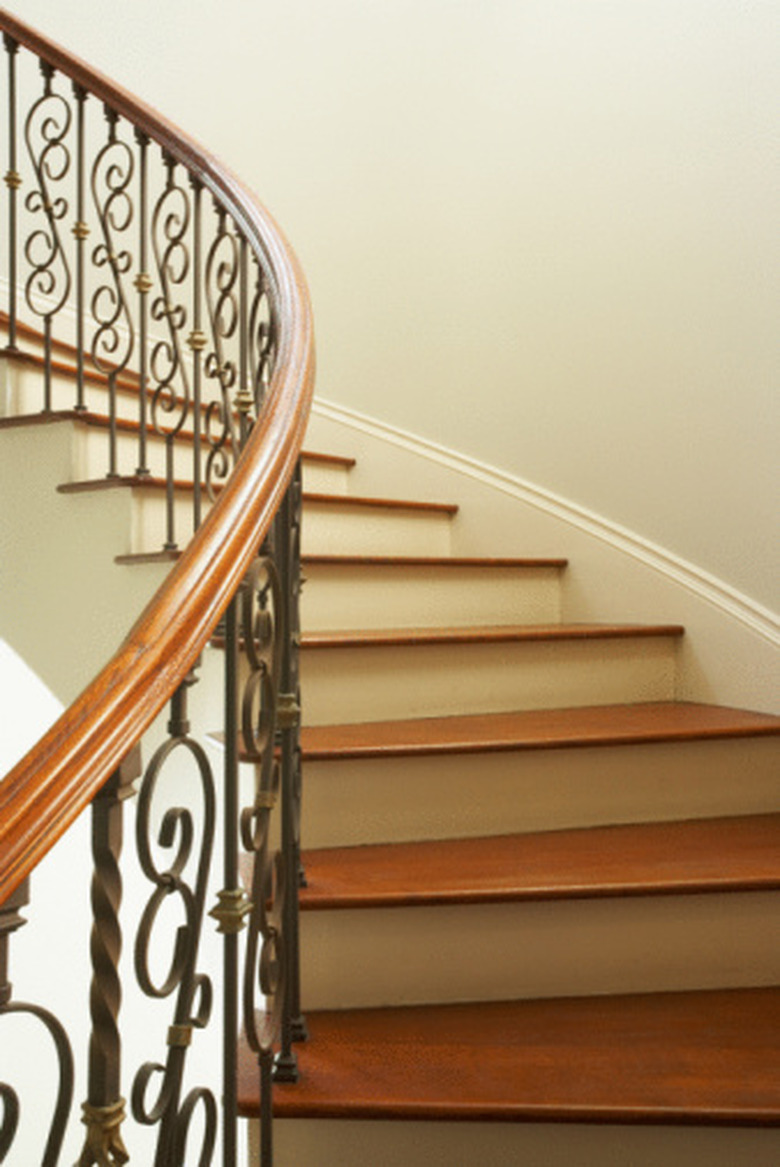What Type Of Sander For Hardwood Stairs?
Hardwood is the standard for classic wood stairs, because most hardwoods — all commercial hardwoods — are durable and can withstand heavy foot traffic. With numerous hardwood species to choose from, and an assortment of wood stain colors, you can achieve a custom look for your stair. An essential part of the stair-finishing process includes sanding the wood to smooth the grain. Since stairs offer limited access to their surfaces, an upright floor sander isn't feasible.
Hand-held Random Orbital
Hand-held Random Orbital
A "hand-held random orbital" is the best hand-held power sander for hardwood stairs because it minimizes the risk of cross-grain sanding scratches. A flat sanding disk spins rapidly while the entire head of the sander revolves. Hold on tight, when you turn the sander on – you'll feel the circular revolution motion.
Palm Sander
Palm Sander
You may use a palm sander on your hardwood stairs. The palm sander's rapid circular vibrations will smooth the wood grain, and all you have to do is guide the sander lightly in a circular pattern. A palm sander is slightly more likely than a orbital sander to leave uneven sanding areas.
Sanding the Details
Sanding the Details
Manual sponge block sanders work well when you're trying to get into small corners or around the bases of balusters. These flexible sanding sponges feature an outer coating of sanding grit, and some sponge sanders have angled ends for reaching into tight spots.
You may also use a small contour sander with a triangular sanding pad, although it won't reach some tight spots as well as a sponge sander will.
The Nitty Gritty
The Nitty Gritty
The sander you use on your hardwood stairs is only as good as the sandpaper grit size you select. Sanding disks, pads and sponge sanders all come in various grits, suitable for different sanding stages. For the initial sanding, or to remove old finish if you're refinishing the stairs, use 80-grit to smooth the hardwood. Switch to 120-grit for the final pre-stain sanding.
After staining, use 120-grit to smooth off the raised grain caused by the staining process. After staining, all sanding is down by hand with a sponge sander.
The final sanding is more like polishing, and it will give the stairs a flawless look. Between coats of wood finish, such as polyurethane or varnish, let the surface dry completely. Then, buff it lightly with a 220-grit sponge sander to remove bits of dust that mar the surface sheen.
References
- Orbital Sander Reviews: The Different Types of Sanders
- "The Woodworker's Handbook"; Roger Horwood, 2003
- This Old House: Choosing and Using a Random-Orbit Sander
